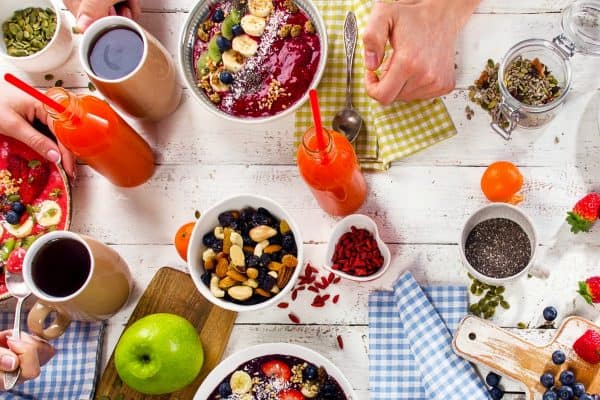2016 was the year of the avocado, with it making the leap from staple fajita topping to accompaniment for pretty much every meal. Apparently, sales of the green fruit even overtook oranges last year! So what superfood trends does 2017 have in store? And will you need a supersized budget to enjoy them? Our six predictions will help you stay ahead of the superfood game this year. They range from the weird and wonderful that are definitely not for the faint-hearted, to accessible ingredients that will help you optimise both your nutrient intake and your shopping spend.
1. Seaweed
Seaweed will already be familiar to sushi-lovers. This year it is expected to make the transition into all sorts of dishes such as pasta, salads, snacks and even desserts! Why? It’s low in calories and packed with essential minerals such as vitamins A, B, and C, as well as iron and protein. It’s also sustainable and therefore good value. Seaweed requires no fertilizers or pesticides to flourish, and it grows all year-round.
Tempted? A 50g bag of “sea spaghetti” costs around £5 from most major supermarkets!
2. Insects
And no, we don’t mean gummy worms (although they’re tasty too!).
Snacking on insects might be more Bush Tucker Trial than brunch, but the reasons for munching on crickets and beetles aren’t as out there as you might think. Believe it or not, a one hundred gram serving of bugs contains more protein, energy, calcium and vitamins than an equivalent serving of chicken, steak or other meat!
Countries like Brazil, Mexico and China have already embraced insects as a staple of their cuisine – could the UK be next?
Do you dare to try edible insects? They’re quite a niche market but you can pick them up online for between £3.50 and £6.50 a bag!
3. Goat
Despite being classified as a red meat, goat meat has been found to contain less fat and more iron than beef, pork and lamb. It’s somewhere between the flavours of lamb and beef and can be quite a strong-tasting. It is also very versatile, working well in curries, sausages, stews and even barbecued.
South Asia and the Caribbean in particular are famous for their spicy goat curries. Check out some recipes online to expand your culinary horizons!
Give goat a go for roughly £4.50 for a 500g pack of mince, or £3-4 for a pack of goat chops online!
4. Activated charcoal
Charcoal has been used as a traditional Chinese medicine for centuries, and it is set make waves in the UK this year. It was commonly used as an antidote to various poisons in old wives tales. Activated charcoal mixed with water and consumed as a drink can help detoxify the body and encourage clearer skin. Also, brushing your teeth with activated charcoal powder can help to whiten them by absorbing the discolouring tannins found in coffee and red wine.
Pick up activated charcoal powder for around £5, or 120 capsules for roughly £10 online. If you’re taking any other medication it may be worth checking with your doctor before you try this, though!
5. Liquorice
Liquorice is a great sweet treat, has soothing, anti-inflammatory properties and can be an effective way to treat inflamed skin. In Chinese Herbology, liquorice is also thought to have a ‘harmonising effect’. This is likely down to it containing a natural substance called adaptogens, which are thought to reduce the body’s reaction to stress. As well as being a traditional British snack, liquorice is also commonly used as an ingredient in herbal teas, either on its own or alongside other relaxing herbs and spices like chamomile and valerian root. Having a relaxing cup of tea has a whole new meaning!
Liquorice root is easy to get hold of for around £2.50 per 100g. Or, you can pick up a pack of nice, comforting liquorice tea for £1-1.50
6. Turmeric
Perhaps one of the easiest foods to get hold of that’s expected to be big this year is turmeric. Not that you’d ever eat this much in one go, but one hundred grams of the spice contains 340% of the adult daily recommended intake of manganese and 517% of iron! It also contains a high level of curcumin – a substance that could help ease the symptoms of osteoarthritis and rheumatoid arthritis.
A good curry is the most obvious way to get some of the yellow stuff into your diet. However, if that’s isn’t your thing, there are plenty of other ways to incorporate it, too. Try it with roasted vegetables or scrambled eggs, or add a teaspoon to hot milk as an alternative to tea.
Turmeric root costs around £2-£2.50, but ground turmeric is much cheaper (and won’t dye your hands yellow) at £1-£1.50!
Are there any superfoods that you absolutely swear by to keep you in tip top condition? Let us know!



















